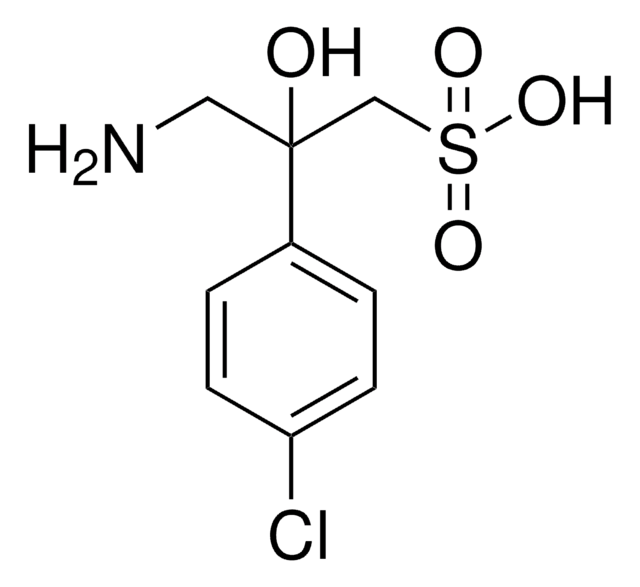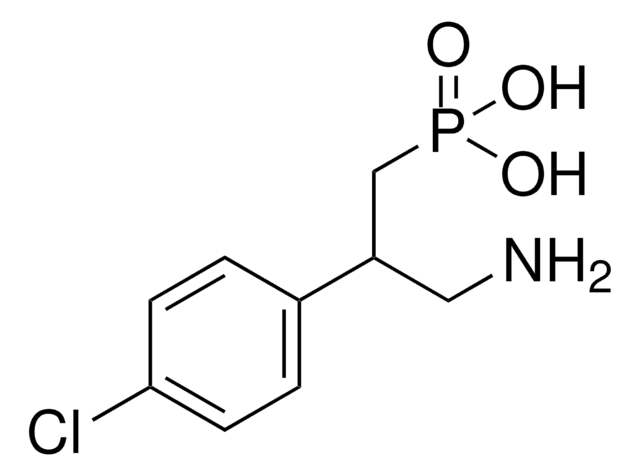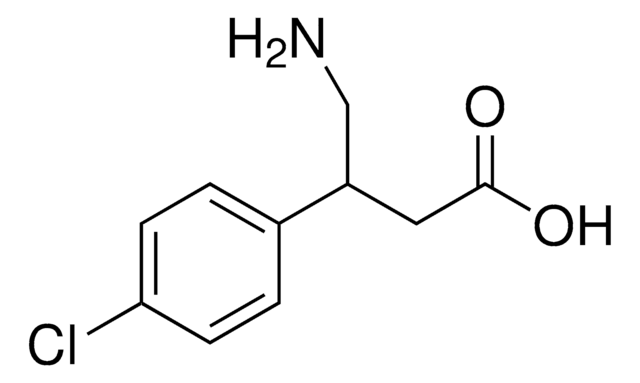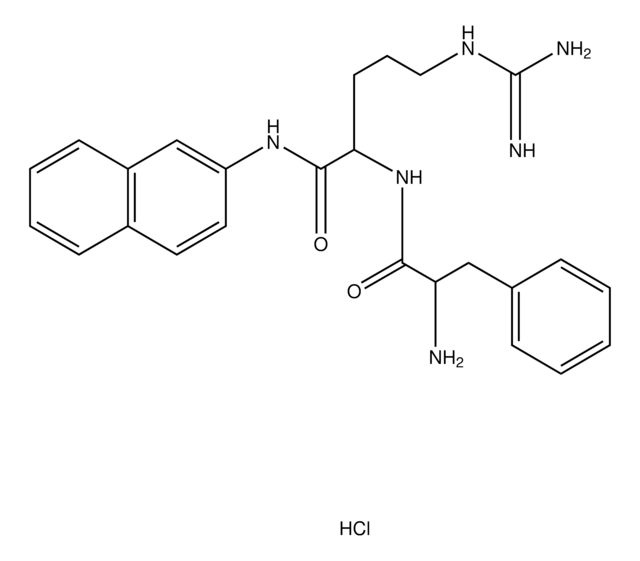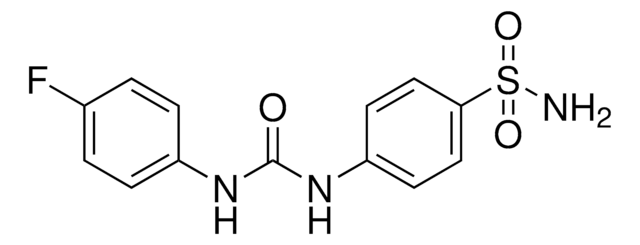S166
Saclofen
solid
Synonym(s):
β-(Aminomethyl)-4-chlorobenzeneethanesulfonic acid
Sign Into View Organizational & Contract Pricing
All Photos(1)
About This Item
Empirical Formula (Hill Notation):
C9H12ClNO3S
CAS Number:
Molecular Weight:
249.71
MDL number:
UNSPSC Code:
51111800
PubChem Substance ID:
NACRES:
NA.32
Recommended Products
form
solid
Quality Level
color
white
solubility
0.1 M NaOH: 20 mg/mL
SMILES string
NCC(CS(O)(=O)=O)c1ccc(Cl)cc1
InChI
1S/C9H12ClNO3S/c10-9-3-1-7(2-4-9)8(5-11)6-15(12,13)14/h1-4,8H,5-6,11H2,(H,12,13,14)
InChI key
JYLNVJYYQQXNEK-UHFFFAOYSA-N
Gene Information
human ... GABBR1(2550) , GABBR2(9568)
mouse ... GABBR1(54393) , GABBR2(242425)
rat ... GABBR1(81657) , GABBR2(83633)
Application
Saclofen has been used as a GABAB receptor antagonist to study the analgesic effect of repeated injections of oxycodone in rats.
Saclofen has been used to prevent the inhibitory action of oxytocin on capsaicin-induced glutamatergic spontaneous excitatory transmission in rat neurons.
Biochem/physiol Actions
Saclofen is the sulphonic analog of baclofen and is a selective GABAB receptor antagonist.
Saclofen might possess sympathetic nervous system-dependent anti-inflammatory action.
Storage Class Code
11 - Combustible Solids
WGK
WGK 3
Flash Point(F)
Not applicable
Flash Point(C)
Not applicable
Personal Protective Equipment
dust mask type N95 (US), Eyeshields, Gloves
Choose from one of the most recent versions:
Already Own This Product?
Find documentation for the products that you have recently purchased in the Document Library.
Huimin Chen et al.
Journal of ginseng research, 44(1), 86-95 (2020-02-26)
Ginsenoside Rb1 (Rb1), one of the most abundant protopanaxadiol-type ginsenosides, exerts excellent neuroprotective effects even though it has low intracephalic exposure. The present study aimed to elucidate the apparent contradiction between the pharmacokinetics and pharmacodynamics of Rb1 by studying the
David P Archer et al.
Anesthesia and analgesia, 104(4), 840-846 (2007-03-23)
Synaptic plasticity is thought to provide a molecular mechanism for learning and memory. N-methyl-d-aspartate receptor-mediated plasticity requires that N-methyl-d-aspartate receptor activation coincides with postsynaptic depolarizing potentials (DPSP(A)'s). Pentobarbital, in high concentrations, enhances DPSP(A)'s, but high concentrations suppress synaptic plasticity, probably
D I Kerr et al.
Neuroscience letters, 107(1-3), 239-244 (1989-12-15)
Saclofen (the direct sulphonic analogue of baclofen) is a competitive antagonist of baclofen at GABAB receptors in guinea pig ileum and rat cortical slices (estimated pA2 = 5.3), at least twice as potent as 2-hydroxy-saclofen (pA2 = 5). A series
Antagonism at GABAB receptors by saclofen and related sulphonic analogues of baclofen and GABA
David I.B.Kerr
Neuroscience Letters (1989)
Eisuke Koya et al.
Neuropharmacology, 56 Suppl 1, 177-185 (2008-06-21)
Cue-induced drug-seeking in rodents progressively increases after withdrawal from cocaine, suggesting that cue-induced cocaine craving incubates over time. Here, we explored the role of the medial prefrontal cortex (mPFC, a brain area previously implicated in cue-induced cocaine seeking) in this
Our team of scientists has experience in all areas of research including Life Science, Material Science, Chemical Synthesis, Chromatography, Analytical and many others.
Contact Technical Service